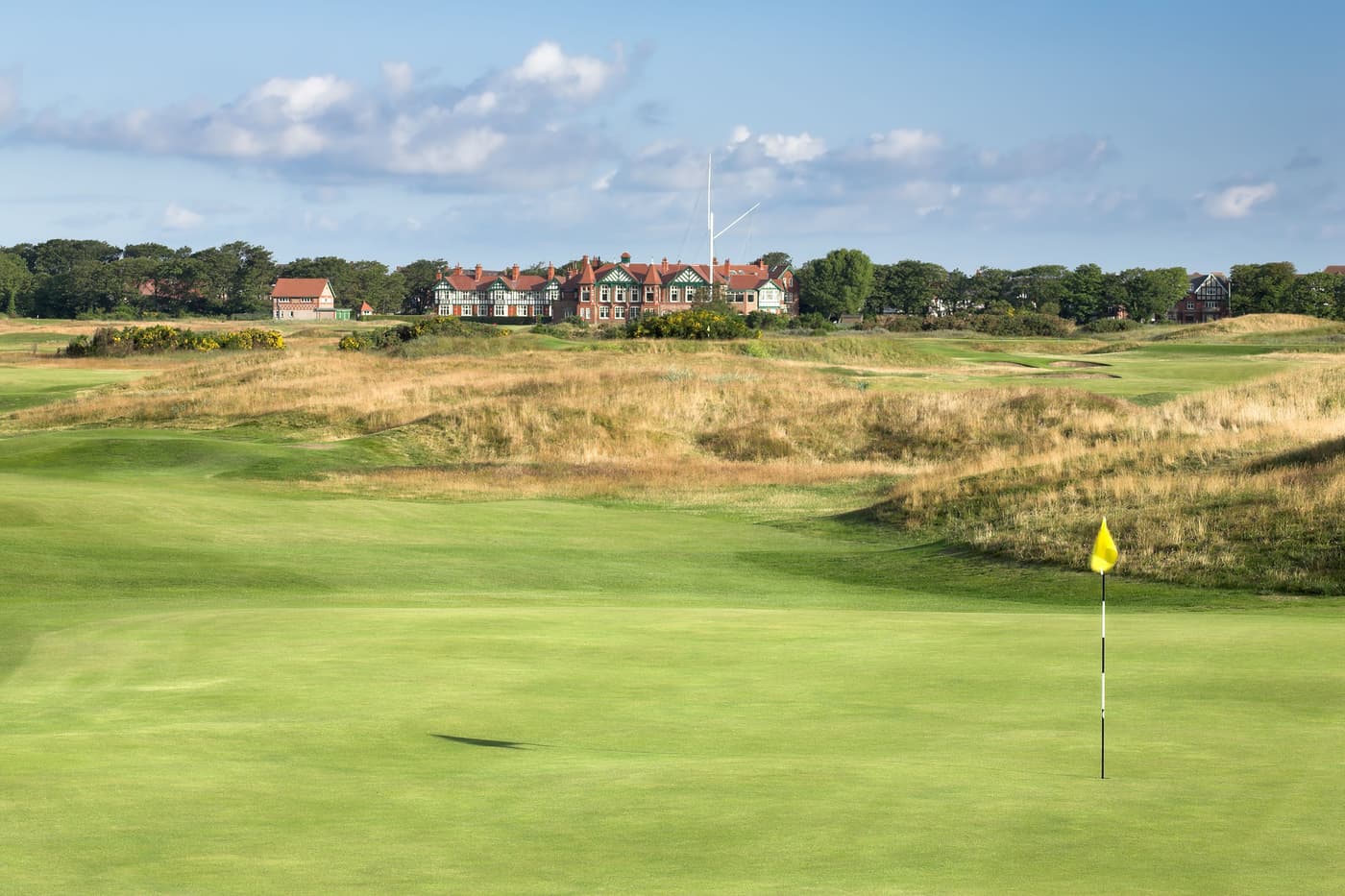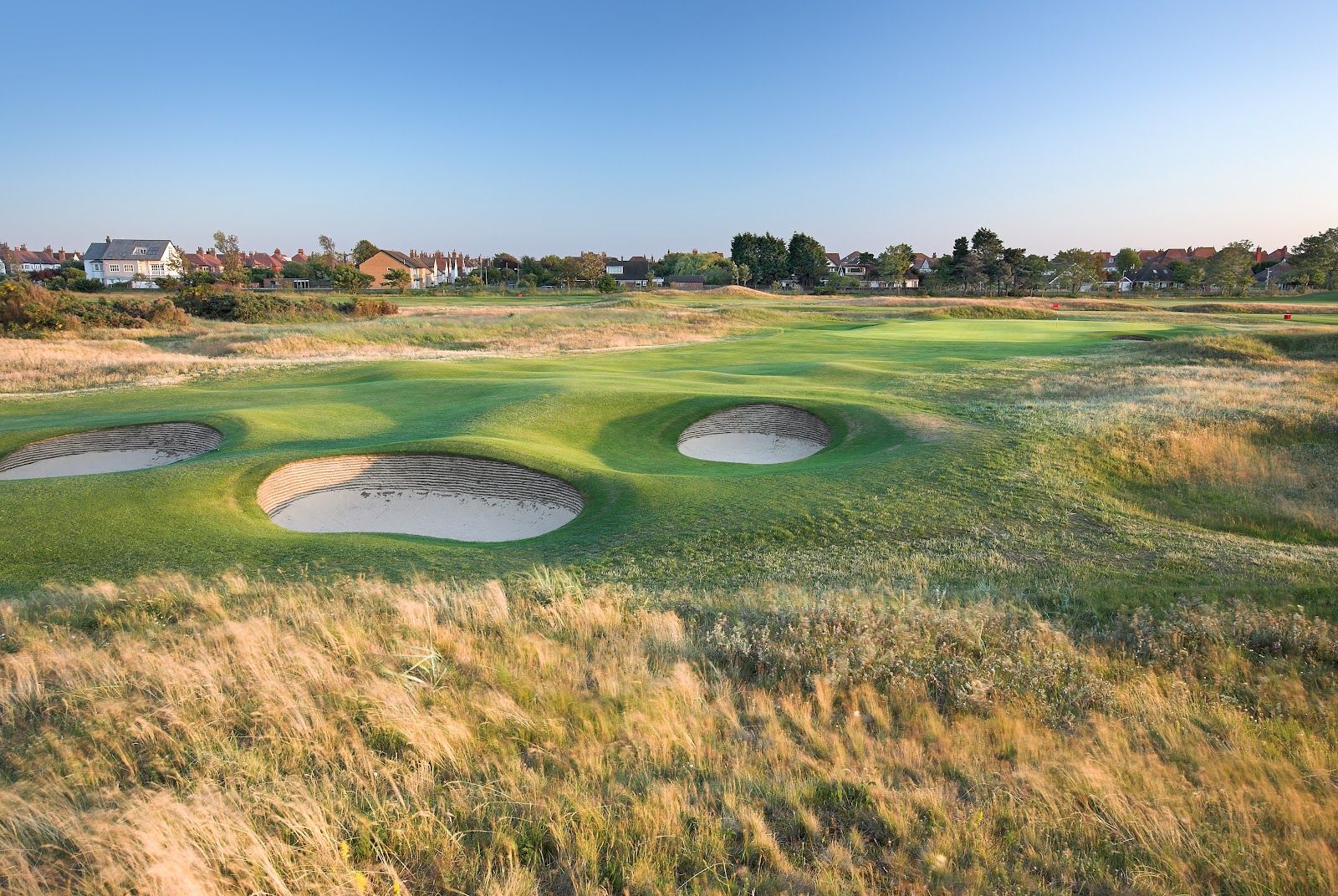
Royal Lytham & St Annes
Lytham Saint Annes, England
- AddressLinks Gate, Lytham St Annes, Lytham Saint Annes FY8 3LQ, UK
- Championships hosted
Eleven-time Open Championship venue, Royal Lytham & St Annes was the fourth English course after Royal St George’s, Royal Liverpool and Royal Cinque Ports to host the Open.
| Date | Winner | Country |
| 1926 | Bobby Jones | USA |
| 1952 | Bobby Locke | S Africa |
| 1958 | Peter Thomson | Australia |
| 1963 | Bob Charles | NZL |
| 1969 | Tony Jacklin | England |
| 1974 | Gary Player | S Africa |
| 1979 | Seve Ballesteros | Spain |
| 1988 | Seve Ballesteros | Spain |
| 1996 | Tom Lehman | USA |
| 2001 | David Duval | USA |
| 2012 | Ernie Els | S Africa |


Royal Lytham & St Annes is the most northerly of the English championship links courses, situated only 10 miles, as the seagull flies, from its illustrious neighbour, Royal Birkdale. This monster links opened for play in 1897, eleven years after the club's formation, when it moved from its original location. George Lowe, the club's first professional, fashioned the links and the layout was further modified between the wars by Harry Colt.
| Royal Lytham & St Annes Golf Club played host to the 1961 and 1977 Ryder Cup matches between the USA and Great Britain & Ireland. Team Captains in 1961 were Jerry Barber (US) and Dai Rees (GB). This 14th edition of Matches was the first to be played in two sets of 18-hole foursomes and singles, which doubled the number of points available from 12 to 24. Unfortunately for the British, this was the debut of Arnold Palmer, who, along with Billy Casper, has won more Ryder Cup points than any other American. USA 14 ½ - GB 9 ½. Team Captains in 1977 were Dow Finsterwald (US) and Brian Huggett (GB & Ireland). Despite GB & I lobbying to reduce the number of matches to 20 and Nick Faldo winning all three of his matches while suffering from glandular fever, it was not enough to prevent the US team from winning its 10th consecutive Ryder Cup. However, this would be the last time that Britain and Ireland would compete alone against the mighty US; players from continental Europe joined forces with GB & I in 1979. The Ryder Cup was played at Eldorado in 1959, East Lake in 1963, Laurel Valley in 1975 and The Greenbrier in 1979. |
This is definitely a links course, but it is no longer beside the sea. It now lies half a mile inland, but with Blackpool tower looming in the distance you know the sea isn't far away. Rather unusually, the links is surrounded by red brick houses and (less unusually) flanked on the west by the railway line. The guardian Victorian clubhouse always watches sternly over the links. Conditioning is often exceptional and not as rough and ready around the edges as many of its contemporaries. The ground is relatively even, except perhaps on a couple of holes, where the going is slightly undulating.
The course itself is extremely tough, only Carnoustie (on the British Open circuit) is thought to be tougher. Bernard Darwin describes Lytham’s challenges in his book, The Golf Courses of the British Isles:
“The trouble, besides the rough grass and pot-bunkers, consists of sandhills, both natural and artificial. To build an artificial sandhill is not a light task, and it is characteristic of the whole-hearted enthusiasm of the golfers of St Anne’s that they have raised several of these terrifying monuments of industry.” At this stage we should remind ourselves that Darwin penned this in 1910, and, in those days, it was highly unusual to build anything other than bunkers, talking of which, the bunkers at Royal Lytham are many and annoyingly magnetic.
The greens are firm, fast and true, or as Darwin once said when he was playing a match at St Annes against an opponent who was a very good putter. “The truly-struck putt comes on and on over that wonderfully smooth turf and flops into the hole with a sickening little thud, and there we are left gasping and robbed of our prey.”
The 1st is unique because this is the only par three starting hole on the Open Championship circuit and it’s a long one, measuring 206 yards from the back tees. Ian Woosnam hit a fine tee shot here in the 2001 Open and then sank the putt thinking he’d made a birdie two. Unfortunately Woosnam was carrying 15 clubs in his bag. This cost the Welshman £225,000 and possibly the Open Championship title—it also cost his caddy around £20,000 and his job.
The 17th hole, a 467-yard par four, belongs to the esteemed Bobby Jones. As an amateur, he won the 1926 Open Championship, beating Al Watrous by two shots. A plaque (located close to the spot from which he nailed his second shot onto the green from a rough, sandy lie during the final round) commemorates Jones’s triumph and the mashie that he used for this remarkable shot is displayed in the clubhouse. The final hole is a relatively ordinary 414-yard par four and it’s a simple case of straight hitting to avoid the 15 bunkers that are trying hard to swallow the ball. The resurgence of British golf occurred here in 1969, when Tony Jacklin’s final drive avoided all the bunkers and he putted out to win the Open in a sea of emotion.
Royal Lytham and St Annes could never be described as a “classical” links course. It doesn’t have any giant shaggy dunes, nor does it have undulating roller-coaster fairways or pretty sea views. But it does have honesty and character by the bucket and spade load, and bags and bags of history.
Course Reviews
Leave a Review
This course has not been reviewed.
If you have played this course, consider .
Thanks for the review
Your review has been successfully submitted and will be reviewed for approval.
Course Reviewed
You’ve already submitted a review for this course.
Course Architect
View All
George Lowe was born in the rural parish of Carmyllie and he moved with his family when he was eight years old to Carnoustie, where he quickly fell in love with the game of golf through caddying.


